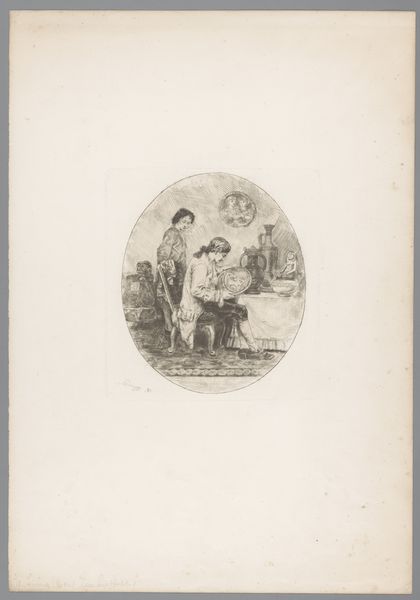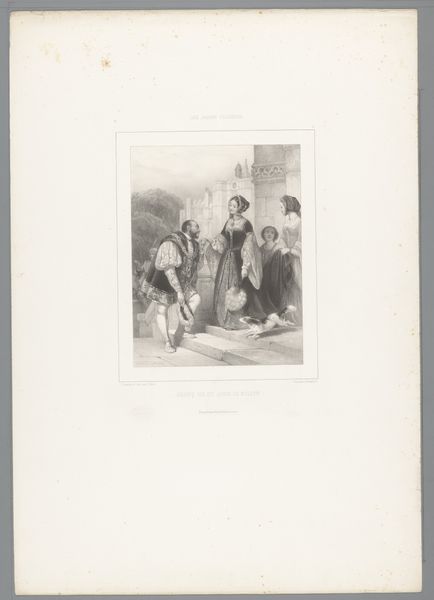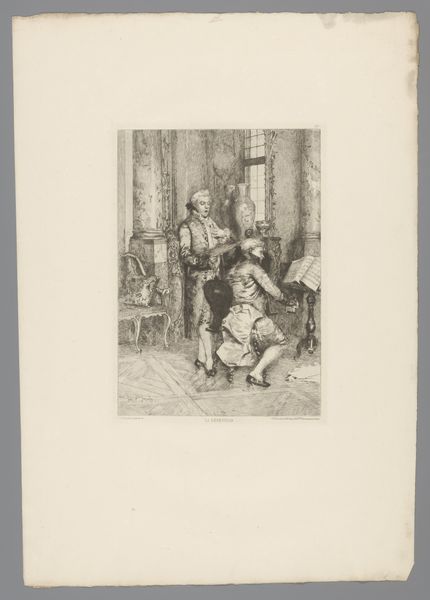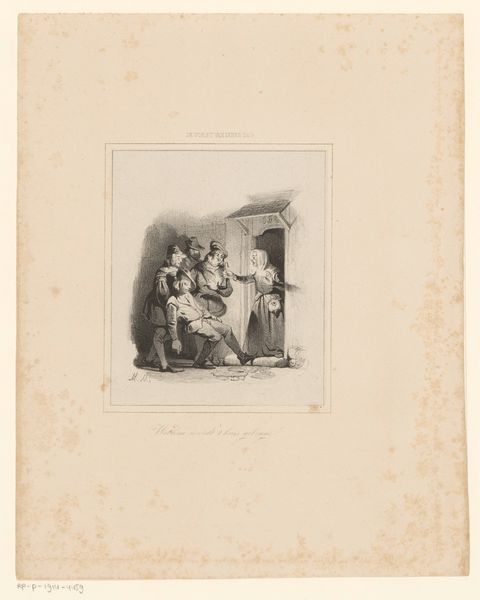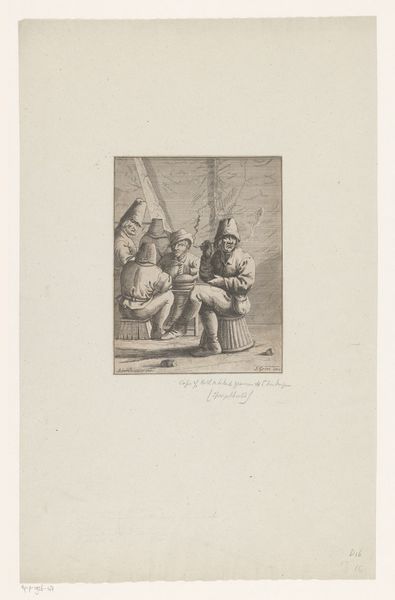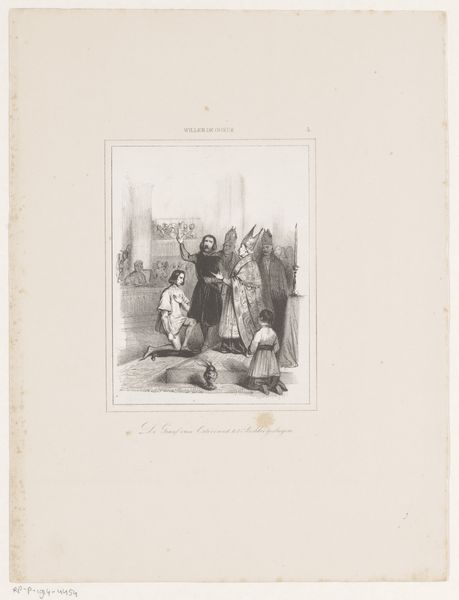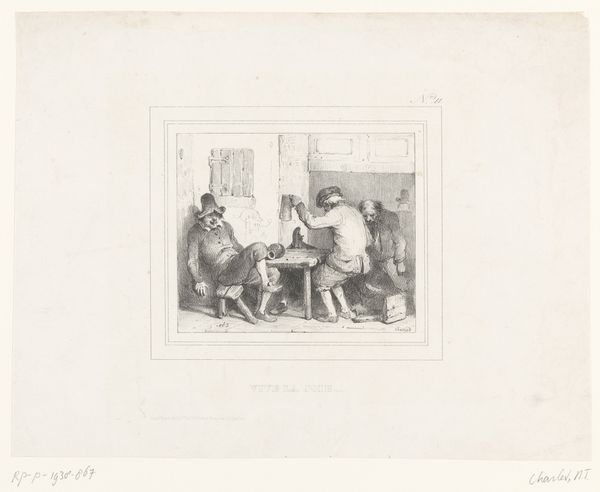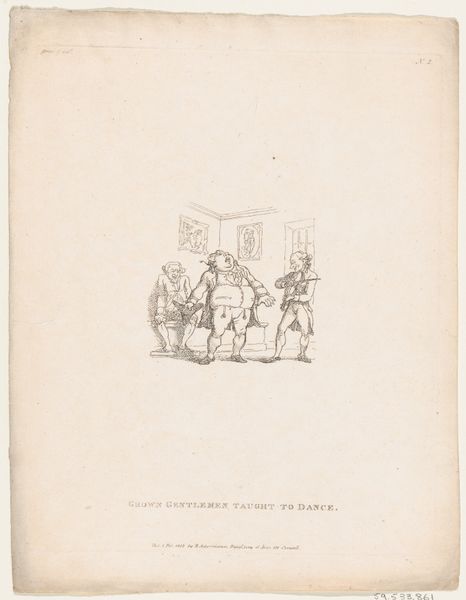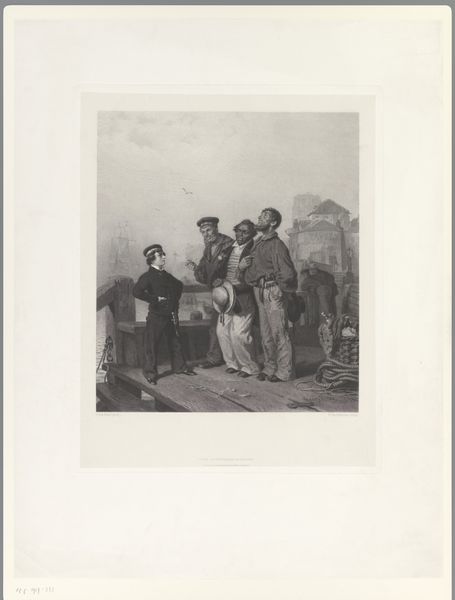
"Ankunft den Dänen von Hamburg am 20. März 1801" 1754 - 1811
0:00
0:00
print, engraving
# print
#
landscape
#
genre-painting
#
northern-renaissance
#
engraving
Dimensions: 133 mm (height) x 80 mm (width) (plademaal)
Curator: Looking at this piece, I’m struck by the rather bleak landscape; it's a stark, almost desolate depiction. And small. Very small indeed. Editor: Well, before we wander too far into aesthetic territory, it's worth noting that this engraving is titled "Arrival of the Danes from Hamburg, March 20, 1801.” The artist is Andreas Stöttrup, though its creation spanned quite a few years, from 1754 to 1811. Curator: Ah, that contextualizes things! I’d read the sparseness as reflective of a tense sociopolitical situation... like the occupation of Hamburg? This makes so much sense, particularly in how the figures are presented; from their posture I would describe them as subdued. Their dress makes them appear almost generic. Is there any other meaning hidden within their clothing? Editor: Their apparent anonymity could definitely reflect a feeling of displacement or even forced conformity under occupation. They become representative figures rather than distinct individuals. The landscape itself adds another layer. The Northern Renaissance often used landscapes not just as settings, but as mirrors to reflect inner states or comment on the human condition. The looming cityscape in the background becomes a silent, judging presence. It suggests a loss of autonomy for the arriving Danes. Curator: I keep thinking about the contrast. The piece uses a detailed print style which is very intimate, but on closer viewing we can observe that the town in the background is heavily smokey which can convey the sense of conflict and unease within the arrival of these people. How much tension could this piece had captured and conveyed through to it's audience at the time? Editor: Given the political circumstances and considering that Stöttrup lived through these events, the print could well serve as both a historical record and a quiet protest. He freezes this moment for contemplation to consider the deeper impact on these individuals. Curator: It provides a visual shorthand for a much larger historical and cultural narrative that continues to reverberate through modern day Danish Identity.
Comments
No comments
Be the first to comment and join the conversation on the ultimate creative platform.
